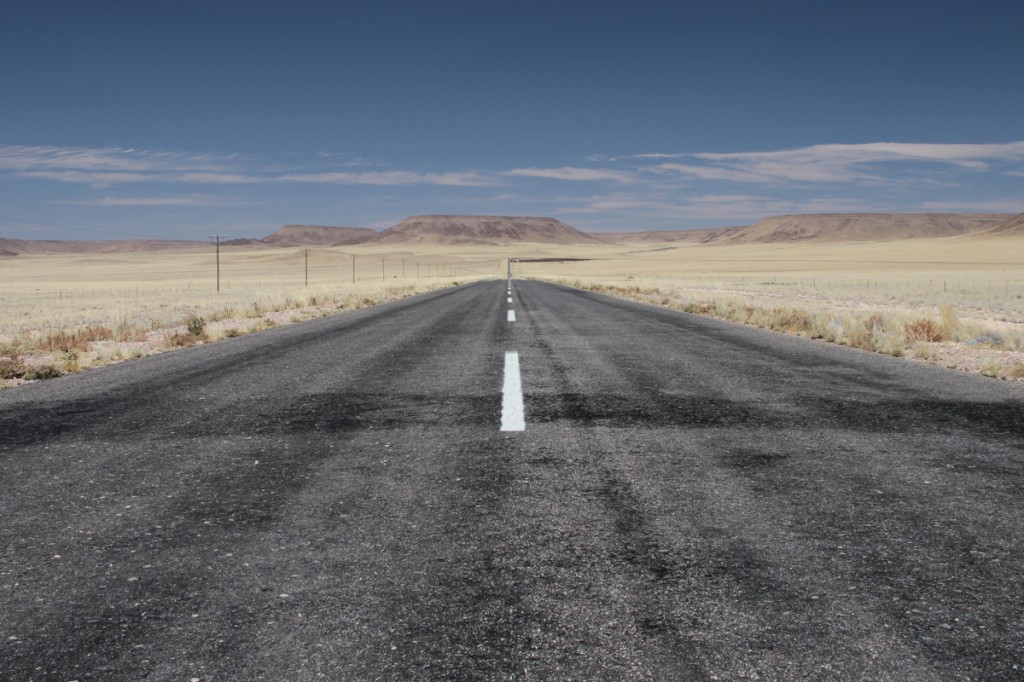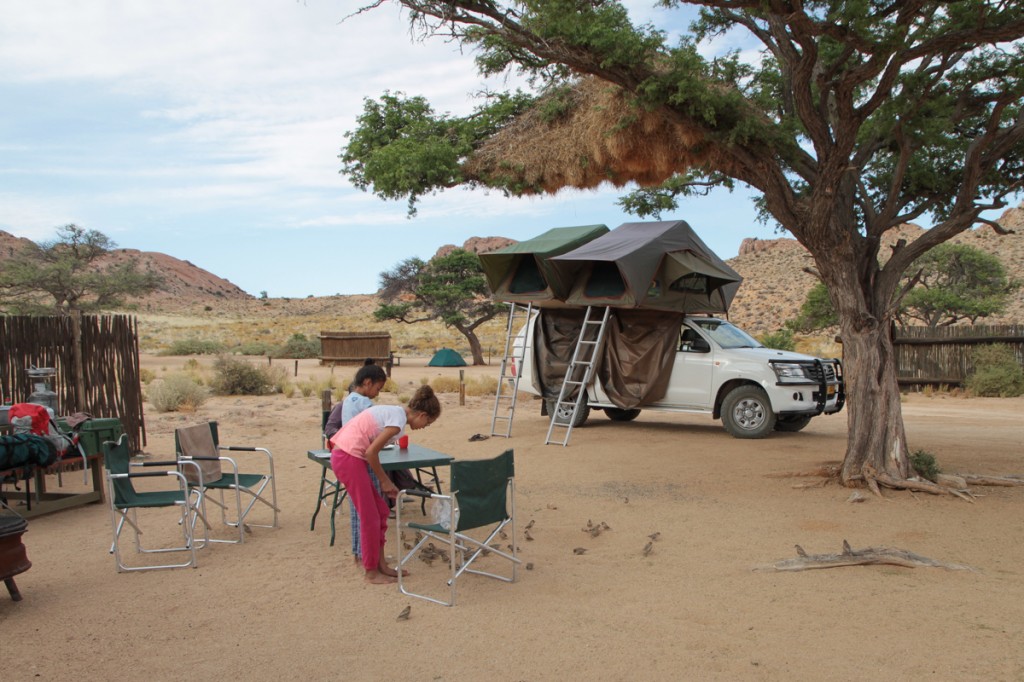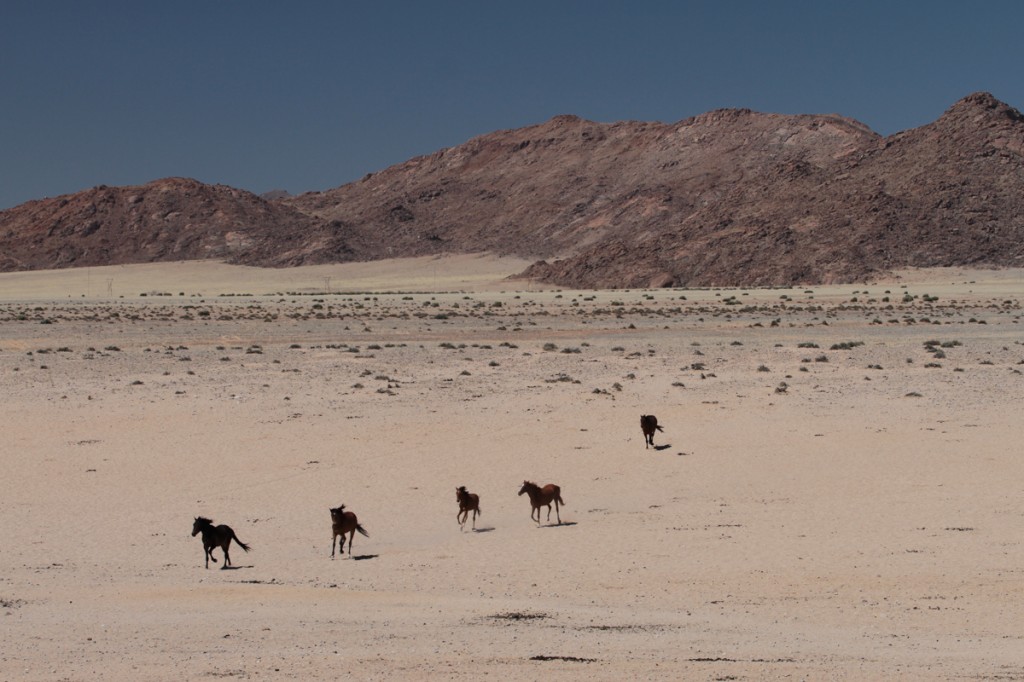Driving through Namibia reminds me of an old saying about weather in New England, “If you don’t like the weather, wait a few minutes”. A Namibian spin would be “if you don’t like the scenery, wait an hour or two”. We saw many scenery changes driving from our campsite at Klein Aus Vista campground in Aus, Namibia to the shoreline town of Luderitz.
While most of Namibia is essentially desert it changes a lot, from rolling hills to flat plains both holding vegetation consisting of shrubs and grasses, thick to sparsely populated to barren. Long hours in the car may sound monotonous but thankfully the scenery keeps changing, just wait an hour.
Aus is located in the mountains at about 5,000 feet where the nights actually get cold for Namibia, dropping to the low 50’s while we were there in November. Jagged, red rock hills surround the campground creating a feel similar to parts of Arizona.
A short distance out of Aus most of the steep hills disappear being replaced by plains of sparse grass, tan in color but takes on a greenish tint as they climb the occasional hill, creating a visual effect of the hills floating in a sea of grass and dirt. The effect is very surreal.
The area is home to a herd of wild horses that can easily be seen in the morning or evening visiting a man made watering hole, one of the few sources of water in the area.
As you get closer to the shore the scenery takes on the look of a moonscape, barren and completely dry where grasses are replaced by gray dirt but the area is more valuable that it appears, there are diamonds in that dirt.
When we picked up The Rig an agent informed us the rental agreement allowed for travel anywhere in Namibia and Botswana except for this region, pointing to a blackened section of the map just north of Luderitz, an area occupied by diamond mines. Dirt roads leading inland from the coast and north from Luderitz are marked with signs stating “Restricted Access, Do Not Enter”, very explicit about not wanting you in this area. I’m not sure of the reason, for our protection or theirs. Perhaps to lessen the risk of diamond smuggling. Early western visitors centuries ago described the area as glistening in the moonlight with diamonds covering the ground. I’m sure diamonds are not that easily had now a days, more likely the protection is for their mining operation. African mines have not had a good record regarding human rights and environmental issues.
The road west leads to Luderitz, a shoreline community known for its german colonial architecture mixed up with a southern african feel. As we approached the shore the sun disappeared behind the clouds and the temperature dropped. The cold atlantic waters create a thick fog, dropping the temperature by up to 20 degrees, similar to San Francisco.
So over the course of an hours drive we passed through at least four different ecosystems similar to the eight hour drive from Sedona, Arizona to Los Angelas. Namibia has far more to offer than just another desert.



